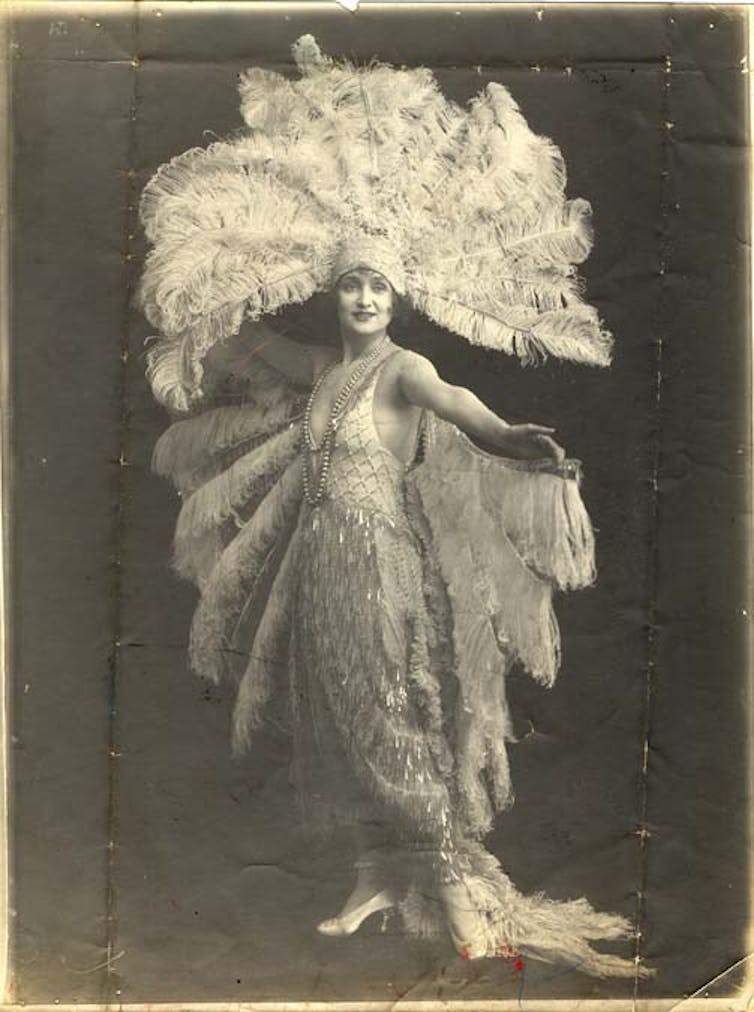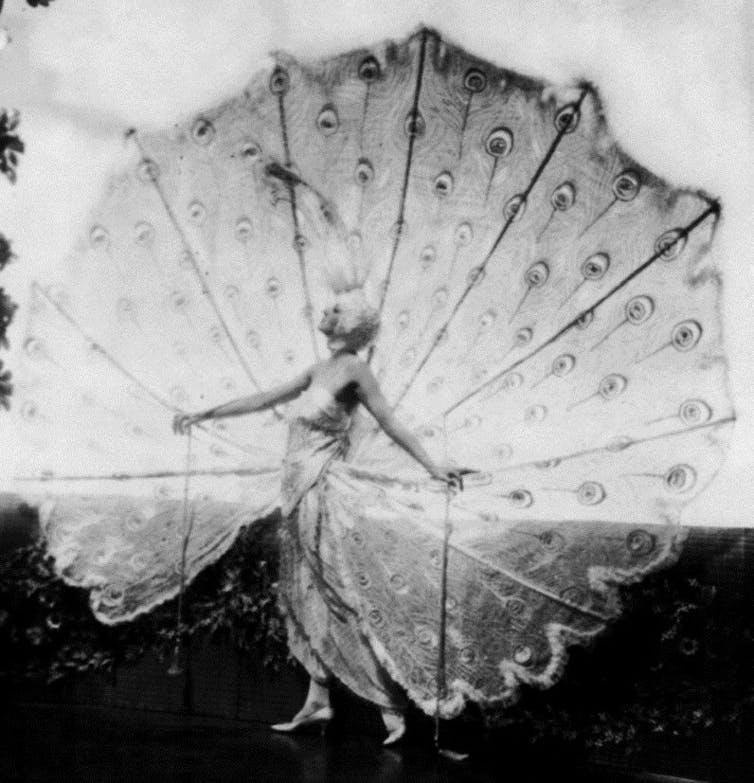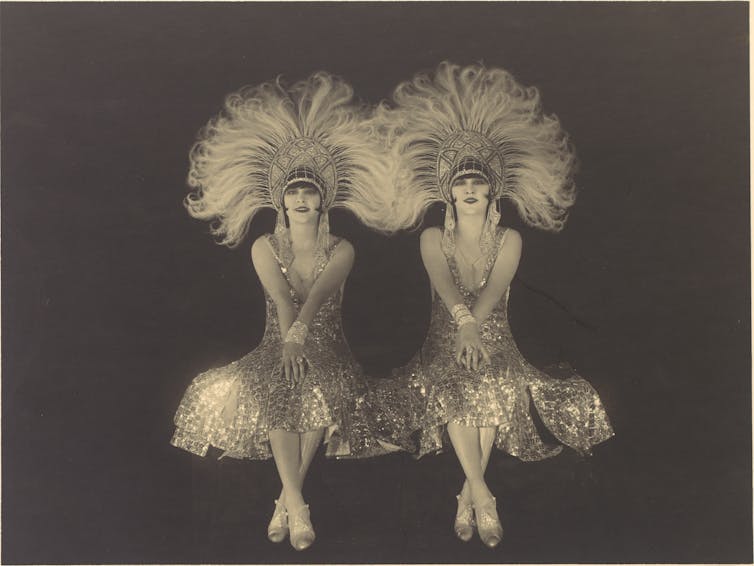The iconic feathered showgirl was born amid the chaos of the first world war, when the wealthy, global French superstar Gaby Deslys entertained Parisians and Allied soldiers in a 1917 show called Laissez-les tombe! (Let Them Fall), a dazzling spectacle of ostrich feathers, rhinestones and beauty.
Although showgirls first appeared in late-19th century music halls, the red, white and blue feathered costumes in Deslys’ revue offered Paris something new and triumphal. The massed plumes, wild dancing and bodily displays celebrated French aesthetics and extravagance and communicated that France and her allies would not bow to Germany.


Gaby Deslys, resplendent in ostrich plumes and jewels, photographed in 1919 by Henri Manuel.
Wikimedia
Prior to 1914 Deslys’s expensive jewellery, haute couture and expansive feathered hats – along with her affairs with powerful men such as department store magnate Harry Selfridge and King Manuel II of Portugal – created countless headlines.
But she was also outspoken about a woman’s right to support herself financially and worked tirelessly during the war raising funds for the Allies. Deslys was so passionate about aiding the devastated Parisian nightlife that she paid for all the costumes in Laissez-les tombe! herself.
Deslys’s cultural impact has inextricably linked feathers, high fashion, celebrity and showgirls ever since.
From France to Broadway
Feathered showgirl revues were so popular that they quickly went global. In 1920s New York, impresarios such as Florenz Ziegfeld staged luxurious Broadway productions that glorified the American showgirl.
But he made exceptions to American women. One of Ziegfeld’s most famous showgirls, Dolores, was born into poverty in London’s East End as Kathleen Mary Rose. She rose to become a supermodel who walked for the couturier Lady Duff-Gordon, known professionally as Lucile.
Ziegfeld considered Dolores one of the world’s most beautiful women. Tall, slender and graceful, she drove audiences wild when she glided across Ziegfeld’s stage and posed in opulent costumes.


The famous haute couture model and showgirl known as ‘Dolores’ posing as the White Peacock in Ziegfeld’s Midnight Frolics (1919).
Wikimedia Commons
On becoming a showgirl, Dolores used her modelling ability to make her fortune, earning today’s equivalent of US$10,000 a week by 1923.
Other performers harnessed the feathered showgirl aesthetic, including the celebrated twins Jenny and Rosie Dolly, who came from humble origins and used their beauty, talent and hard work to dominate American and European stages in the 1910s and 1920s.
Ziegfeld paid the Dollys the equivalent of US$64,000 weekly in 1915. Like Deslys, they became notorious for their consumption of fashion and affairs with famous men.


The Dolly Sisters, famous performers in the Ziegfeld Follies of the 1910s and 1920s.
The Metropolitan Museum of Art
However, stage revues became unpopular around 1930 due to their vast expense and the rise of cinema – so the showgirl travelled to Hollywood.
There,

